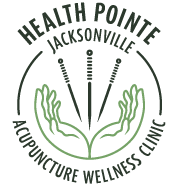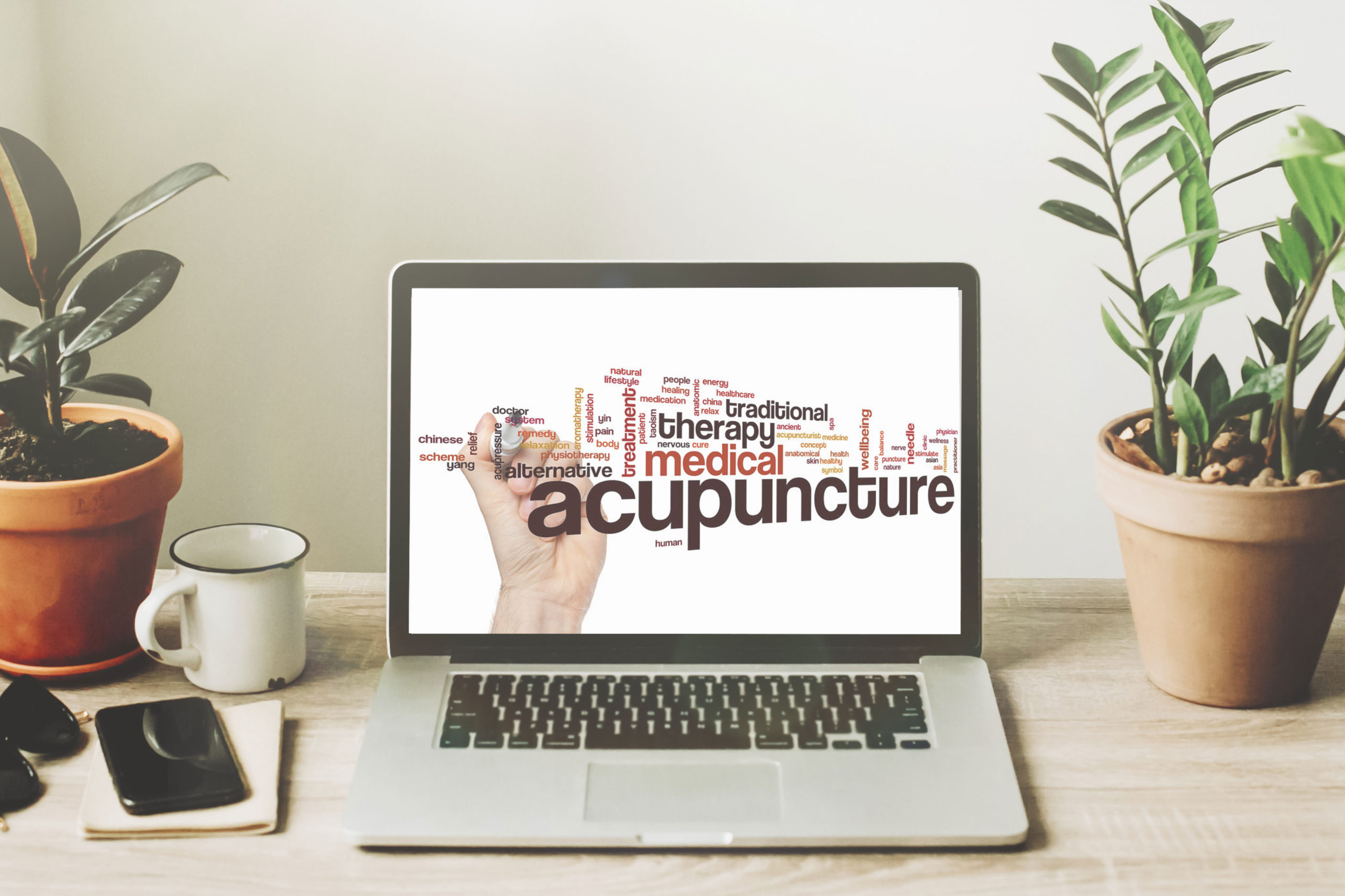Healthy Points- Demystifying Acupuncture
Julee Miller, AP, DOM, BS, LMT
Acupuncture Physician, Diplomat of Oriental Medicine
Owner of Health Pointe Jacksonville/ www.hpjax.com
Ever wonder how many people are utilizing avenues of healing that are outside the realm of “conventional medicine”? As it turns out, that number is rapidly increasing here in the United States, as more and more people discover the benefits of using complementary and alternative medicine (CAM), including acupuncture, massage and chiropractic. According to the National Center for Complementary and Alternative Medicine (NCCAM), part of NIh, in 2007 10% of Americans reportedly have tried acupuncture to relieve discomfort caused by fibromyalgia, chemotherapy-induced nausea and vomiting, low back pain, and other ailments. That’s roughly 30 million people! In a nation where more people are turning to these therapies each year, such services are becoming more pervasive no matter where you live. And given the popularity rise in Acupuncture over the last 10 years, more and more health insurance plans actually accept and reimburse for this treatment.
So what exactly is acupuncture? Very basically, it is the insertion of very fine needles on the body’s surface, in order to influence physiological functioning of the body. The purpose of these needles is to stimulate specific acupuncture points to promote self healing of imbalanced, or unhealthy, areas.
The modern scientific explanation is that needling the acupuncture points stimulates the nervous system to release chemicals in the muscles, spinal cord, and brain. These chemicals will either change the experience of pain, or they will trigger the release of other chemicals and hormones which influence the body’s own internal regulating system. “Some of the most interesting research on acupuncture is how it might impact brain functioning,” said Richard Nahin, acting director for research at NCCAM. Magnetic resonance imaging (MRI) observations during acupuncture have shown specific areas of the brain that respond to the treatment. Once a needle is inserted into the skin it basically communicates with the central nervous system (the brain) to effectively speed up the healing process or slow down certain chemical reactions by blocking certain neurotransmitters.
This is also how acupuncture can treat such a wide variety of ailments including: chemotherapy nausea and vomiting, postoperative dental pain, addiction, stroke rehabilitation, headache, menstrual cramps, tennis elbow, fibromyalgia, myofascial pain, osteoarthritis, low back pain, carpal tunnel syndrome, infertility, and asthma. For example, when a person experiences an injury the body responds with a very specific and deliberate cellular response to clean up the injured tissue, repair it and return the injured tissue back to it’s healthy state. By adding acupuncture this very natural bodily response is magnified and accelerated by 70%. So the person heals that much quicker. All without medications that only mask the pain sensation and even possibly surgery.
Acupuncture may also have an effect on the body’s stress response system, otherwise known as the hypothalamus-pituitary-adrenal (HPA) axis, which could be why acupuncture patients report lower stress levels and anxiety after treatment. A side benefit of acupuncture is the release of endorphins, the body’s famed “feel good” chemicals that quell pain patterns. Endorphins have the knack for acting like morphine on the body and brain.
According to the Mayo Clinic “When performed properly by trained practitioners, acupuncture has proved to be an effective therapy for back pain. Several studies have found that acupuncture can help reduce chronic back pain and improve daily function.”
Very, very important: when performed PROPERLY by TRAINED practitioners. Why do I emphasize this? Very simply: acupuncture is not a pill but a procedure. It’s not just sticking a needle in, but the practitioner skill level is vital in the selection of acupoints and proper manipulation depending on the patient’s particular condition. Not all acupuncturists are the same, so be ware. Some states (Florida included) will allow other practitioners to “practice” acupuncture with very little course work and allow them to call themselves “acupuncture specialists”. They are not. While they may have been taught how to insert a needle, they simply do not understand Chinese Medicine and it’s application to help you fully reach your end goal. Interestingly, acupuncture is only one part of Traditional Chinese Medicine which also includes herbal medicine, nutrition, electrical stimulation, moxibustion, cupping, massage techniques, gua sha, and herbal patching.
It’s not only Chinese Medicine that I practice in my clinic. With a background in Athletic Training and Sports Rehab I am able to understand the kinesiology behind pain syndromes and instruct proper stretching and exercises to further reduce the pain and strengthen the area. I also give food therapy instruction on healthier eating patterns to further reduce discomforts and improve overall health. That’s part of the process here. A Typical treatment lasts between 30 minutes to 45 minutes. The initial treatment is longer and consists of an evaluation including a detailed medical history, range of motion and strength tests as needed and differential diagnostics.In Chinese Medicine this include taking your pulse and looking at your tongue, observing facial and eye components of color/palor/reactions and postural analysis. The evaluation is commonly followed immediately by the initial treatment and completed with general prognosis, herbal medicine prescription, nutritional suggestions and exercises.
I think some people are afraid of needles and that’s understandable. But in my experience the fear is based on past experiences with medical hypodermic needles, vaccinations and the presumption that acupuncture is an injection of sorts. It is not. Acupuncture needles are made of extremely thin, solid, flexible, surgical stainless steel, hair-fine filaments. The insertion of the acupuncture needle is usually painless. Occasionally a slight sensation may be felt upon entry. Once the needles are in place, the individual should not be aware of any discomfort, but instead they may feel warmth or other mild sensations at the needle site. A common side effect is bruising of some points. If this happens, it is short term with no lasting effects. Most people enjoy acupuncture and find it very relaxing. Often people are surprised at how comfortable they become during a treatment. They may even fall asleep. And anyone can receive acupuncture. From infants to geriatrics.
If you haven’t tried this time tested form of health care- it’s time you did!
The modern scientific explanation is that needling the acupuncture points stimulates the nervous system to release chemicals in the muscles, spinal cord, and brain. These chemicals will either change the experience of pain, or they will trigger the release of other chemicals and hormones which influence the body’s own internal regulating system. “Some of the most interesting research on acupuncture is how it might impact brain functioning,” said Richard Nahin, acting director for research at NCCAM. Magnetic resonance imaging (MRI) observations during acupuncture have shown specific areas of the brain that respond to the treatment. Once a needle is inserted into the skin it basically communicates with the central nervous system (the brain) to effectively speed up the healing process or slow down certain chemical reactions by blocking certain neurotransmitters.
This is also how acupuncture can treat such a wide variety of ailments including: chemotherapy nausea and vomiting, postoperative dental pain, addiction, stroke rehabilitation, headache, menstrual cramps, tennis elbow, fibromyalgia, myofascial pain, osteoarthritis, low back pain, carpal tunnel syndrome, infertility, and asthma. For example, when a person experiences an injury the body responds with a very specific and deliberate cellular response to clean up the injured tissue, repair it and return the injured tissue back to it’s healthy state. By adding acupuncture this very natural bodily response is magnified and accelerated by 70%. So the person heals that much quicker. All without medications that only mask the pain sensation and even possibly surgery.
Acupuncture may also have an effect on the body’s stress response system, otherwise known as the hypothalamus-pituitary-adrenal (HPA) axis, which could be why acupuncture patients report lower stress levels and anxiety after treatment. A side benefit of acupuncture is the release of endorphins, the body’s famed “feel good” chemicals that quell pain patterns. Endorphins have the knack for acting like morphine on the body and brain.
According to the Mayo Clinic “When performed properly by trained practitioners, acupuncture has proved to be an effective therapy for back pain. Several studies have found that acupuncture can help reduce chronic back pain and improve daily function.”
Very, very important: when performed PROPERLY by TRAINED practitioners. Why do I emphasize this? Very simply: acupuncture is not a pill but a procedure. It’s not just sticking a needle in, but the practitioner skill level is vital in the selection of acupoints and proper manipulation depending on the patient’s particular condition. Not all acupuncturists are the same, so be ware. Some states (Florida included) will allow other practitioners to “practice” acupuncture with very little course work and allow them to call themselves “acupuncture specialists”. They are not. While they may have been taught how to insert a needle, they simply do not understand Chinese Medicine and it’s application to help you fully reach your end goal. Interestingly, acupuncture is only one part of Traditional Chinese Medicine which also includes herbal medicine, nutrition, electrical stimulation, moxibustion, cupping, massage techniques, gua sha, and herbal patching.
It’s not only Chinese Medicine that I practice in my clinic. With a background in Athletic Training and Sports Rehab I am able to understand the kinesiology behind pain syndromes and instruct proper stretching and exercises to further reduce the pain and strengthen the area. I also give food therapy instruction on healthier eating patterns to further reduce discomforts and improve overall health. That’s part of the process here. A Typical treatment lasts between 30 minutes to 45 minutes. The initial treatment is longer and consists of an evaluation including a detailed medical history, range of motion and strength tests as needed and differential diagnostics.In Chinese Medicine this include taking your pulse and looking at your tongue, observing facial and eye components of color/palor/reactions and postural analysis. The evaluation is commonly followed immediately by the initial treatment and completed with general prognosis, herbal medicine prescription, nutritional suggestions and exercises.
I think some people are afraid of needles and that’s understandable. But in my experience the fear is based on past experiences with medical hypodermic needles, vaccinations and the presumption that acupuncture is an injection of sorts. It is not. Acupuncture needles are made of extremely thin, solid, flexible, surgical stainless steel, hair-fine filaments. The insertion of the acupuncture needle is usually painless. Occasionally a slight sensation may be felt upon entry. Once the needles are in place, the individual should not be aware of any discomfort, but instead they may feel warmth or other mild sensations at the needle site. A common side effect is bruising of some points. If this happens, it is short term with no lasting effects. Most people enjoy acupuncture and find it very relaxing. Often people are surprised at how comfortable they become during a treatment. They may even fall asleep. And anyone can receive acupuncture. From infants to geriatrics.
If you haven’t tried this time tested form of health care- it’s time you did!




About The Author: Julee Miller
More posts by Julee Miller